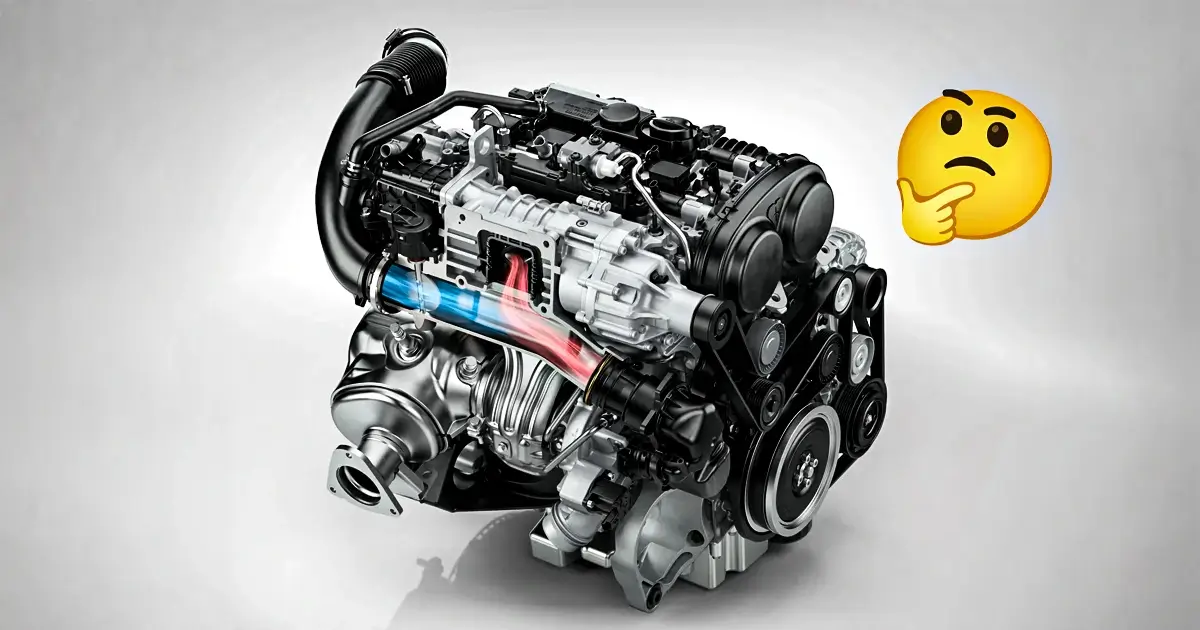Here’s an acknowledgment: the initial time I operated a turbocharged vehicle, I was unable to cease smiling. That instant wave of power when the compressor activated appeared like a hidden boost button. But afterward, trapped in city congestion, the same car seemed uneven and thirsty. That’s the moment I understood boosters aren’t only about thrill, they’re a compromise. If you’re evaluating one, you must understand both the charm and the drawback that appear with it.
The Magic of Extra Power in a Small Package
At its essence, a turbocharger is like offering your engine a dose of energy. It pushes extra air into the chambers, allowing the engine to consume additional fuel and generate more power without raising engine volume. That’s the reason a little 1.4-liter turbo can act like an earlier 2.0-liter engine.
The elegance of this is effectiveness. Manufacturers reduced engines to fulfill fuel and exhaust regulations, but with compressors, they did not have to abandon output. I still recall riding a tiny car that dragged like a much larger car, all because of its turbo. It’s a smart technique: lower weight, extra force
Better Mileage… But Only Sometimes
One major benefit of turbocharged machines is their ability to improve fuel economy, particularly during constant driving on highways. Because the motor is tinier, it can consume reduced fuel relative to an inherently non-turbo one. Nevertheless, the drawback is that when the turbo activates, fuel usage increases steeply. I discovered this personally when my efforts at “soft driving” collapsed whenever the boost attracted me, fuel efficiency reduced. The fact is, compressors only provide fuel reductions if you ride with control.
Turbo Lag – The Waiting Game
If you have ever pushed the throttle and sensed a small delay before the car leaped ahead, you’ve faced boost delay. It’s that pause as the turbo starts running and creates force. Some operators don’t bother with it; some consider it annoying, particularly in city jams.
Individually, I got adapted to expecting the pause. On passes, I’d push the throttle a second earlier than normal, syncing the boost so it came exactly when I required it. It seemed like studying the beat of a dance was clumsy initially, but satisfying once learned. Still, it is a thing you don’t face in inherently aspirated machines, which provide power immediately.
Maintenance & Longevity – No Free Lunch
Turbochargers function under severe pressure, rotating at over 100,000 RPM and producing severe heat, which causes pure oil and requires correct servicing. Ignoring oil renewals or applying low-grade oil can rapidly harm the system. When boosters collapse, restorations are expensive, often reaching thousands, relative to basic repairs like ignition plugs. While current boosters are more dependable, they still introduce technical complications to a car. If you aim to retain a turbo vehicle for years, handle it like a demanding sportsman who requires regular attention.
Heat and Stress – What’s under the Hood
The additional energy from a turbo doesn’t appear complementary. Extra air and fuel indicate greater heat, and increased heat results in more pressure on engine components. That’s the reason many turbo vehicles appear with chillers (to chill the air flowing in) and more durable inner parts.
Ever observe how several turbocharged cars maintain their cooling blowers working after you switch off the starter? That’s not an error; it is to chill the booster down. I once overlooked this and turned off instantly after an energetic ride; later, I realized that is how you reduce a booster’s life. Little points, such as idling for a moment before switching off, can travel a prolonged distance in defending your engine.
The Driving Experience – Excitement vs. Smoothness
Handling a turbo car seems unique. When the surge comes, it’s a burst of twisting force that forces you behind in your position. On the reverse aspect, lacking a rise, the car may appear feebler than an inherently breathing engine of comparable size. This “double personality” impact causes some individuals to adore boosters and others to dislike them.
As for me, it relies on temperament. On wide motorways, I love that surge of force it makes long journeys exciting. But in a packed jam, I sometimes desire the direct, consistent quality of a basic, innately breathing engine. Force induction adds excitement, but thrill isn’t constantly handy.
Also Read:
- What’s the Best Age to Buy a Used Car? Here’s What Smart Buyers Know
- Is $10000 a Good Budget for a Car? Here’s What You Need to Know
- Why Paddle Shifters Are Not Just for Sports Cars – The Secret Advantage Nobody Talks About!
- Top 5 Car Features You’ll Never Use (But Paid for Anyway)
- When Is the Best Time of Year to Buy a New Car – The Answer Might Surprise You!
Which Driver Are You?
In conclusion, turbocharged machines aren’t universal. They excel for certain operators and annoy others. So, question yourself: which one exists as you?
Option A: The Power Seeker
You like rapid speed, highway passes, and the rush of the surge. You’re fine with additional attention and repair because the output is rewarding it.
Option B: The Practical Cruiser
You desire consistent, seamless driving with reduced shocks. You’d rather have stable dependability than handle with delay, heat, or fixing expenses.
Option C: The Balanced Driver
You like the finest of both sides, applying the booster’s power when required but handling softly majority of the time softly. You consider the turbo not like a plaything but as an instrument.
